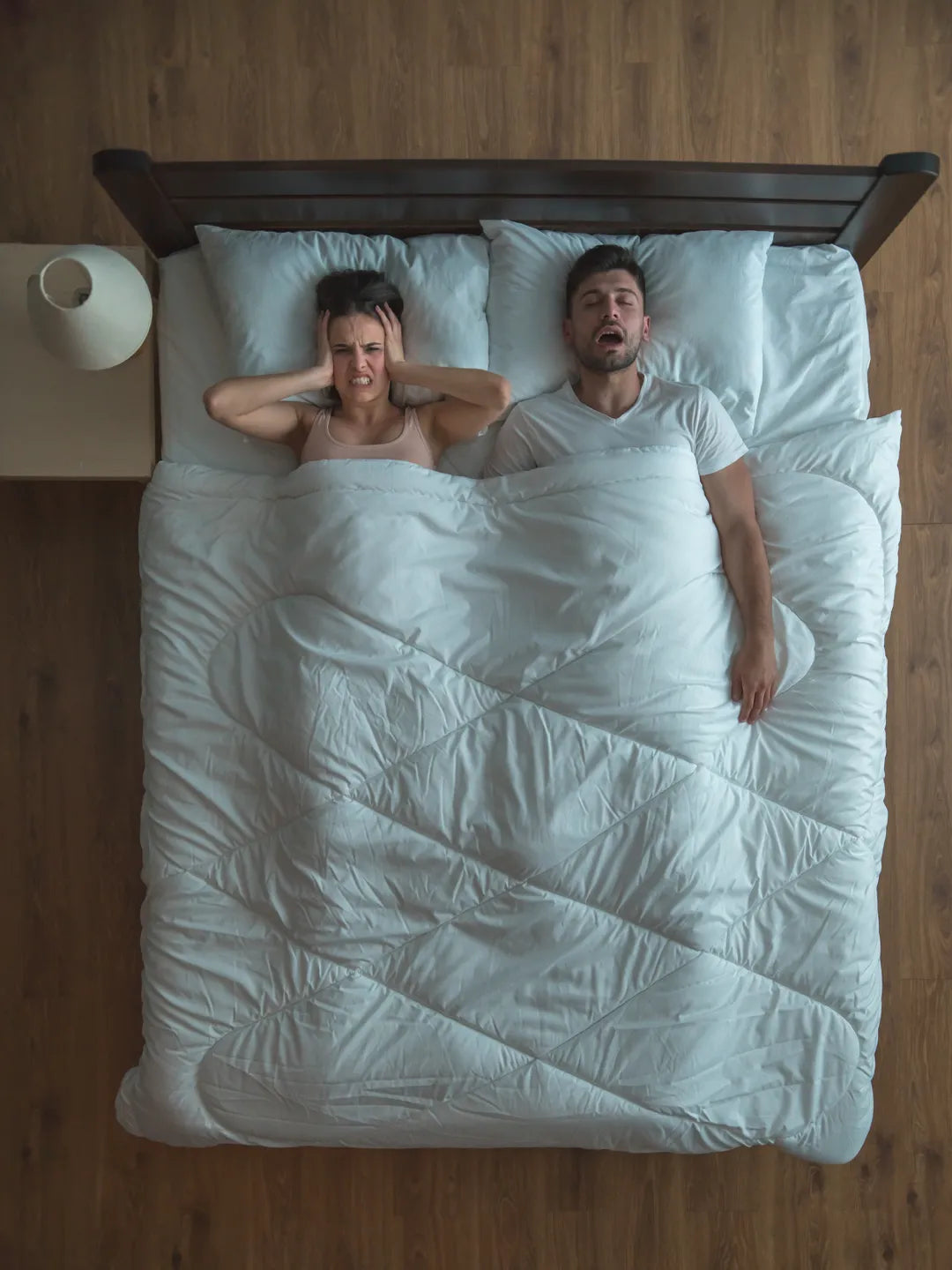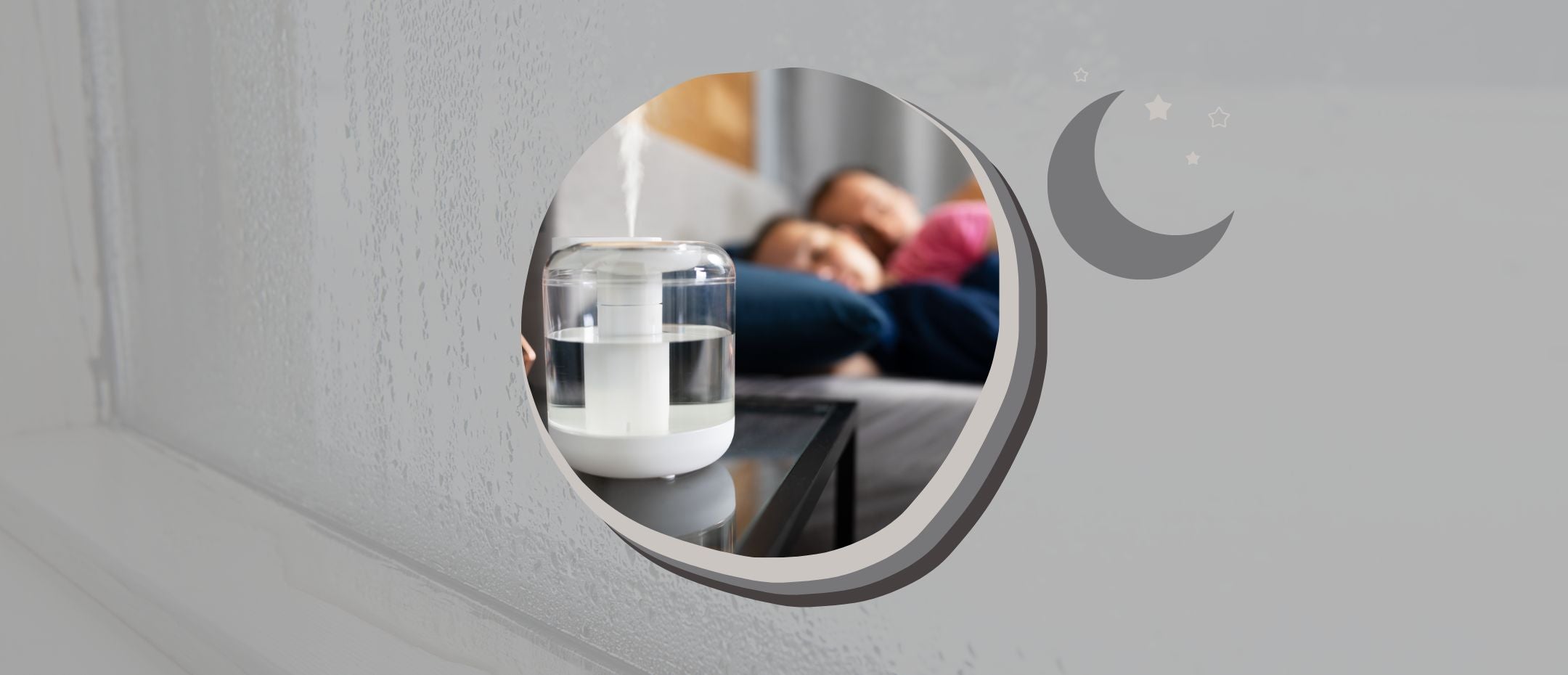Getting a good night’s sleep is crucial to maintaining a healthy mind and body.
There are many things that play into getting a good night of sleep, like limiting caffeine or alcohol consumption too close to bedtime, maintaining treatment for any medical conditions or sleep disorders, and creating the perfect environment in your sleeping space.
By omitting blue light and reducing sound, many people sleep better, but most do not know the harmful effects of sleeping in a dry room.
Your memory foam mattress specialists at Polysleep are here to help sleepers understand the link between sleep and humidity to help them sleep soundly.
The effects of humidity on your sleep
Humidity levels are directly related to the level of water vapor in the air.
There are two common types of humidity that affect sleep:
- Absolute humidity is the actual amount of moisture in the air and is unaffected by the air’s temperature.
- Relative humidity involves the amount of moisture in the air compared to the total amount of moisture that can be held at the current temperature.

For example, two rooms may be set at the same absolute humidity levels, but a room with a lower temperature will have a higher relative humidity than a bedroom with a higher temperature. Absolute humidity can negatively impact sleep. The effects of sleeping in a dry room can lead to difficulty breathing, exacerbated asthma symptoms, and increased respiratory illnesses.
Air that contains too much moisture can make it difficult to fall asleep or stay asleep, resulting in an impact on maintaining adequate time in each stage of sleep. Allergens, such as dust mites and mold thrive in areas of higher humidity, leading to more frequent respiratory irritation. The human body is made up of nearly 80% water, which is why the body does not react well to dry air.
Symptoms of sleeping in a dry room include:
- Itchy or irritated eyes
- Epistaxis (nosebleeds)
- Dry, itchy skin
- Cold and flu symptoms like sore throat, cough, or congestion

What is the best humidity level for sleeping?
The best humidity level for sleeping varies based on the region in which you live. A cool area may have a higher relative humidity, but a warmer region will feel more humid.
Indoor humidity should never exceed 60%, according to the Environmental Protection Agency (EPA). High-humidity sleep problems may be presented as increased wakefulness or disrupted slow-wave REM sleep and NREM sleep.
Increased moisture in areas of higher temperatures can leave you feeling sticky and uncomfortable.
Trying to sleep during hot weather can leave you sweating uncontrollably. Experts recommend circulating air throughout your sleeping space with a fan, utilizing a cooling mattress topper in Canada, purchasing a high-end mattress with Gelflex Plus foam, and using a device in your home to monitor humidity levels.
What is the best humidity for sleep apnea?
Sleep apnea is a serious medical condition resulting in a person’s breathing stopping and restarting at various times throughout the night.
Sleep apnea occurs when the muscle that supports the throat temporarily relaxes, resulting in the airway closing.
People living with this condition often use a continuous positive airway pressure machine to maintain an open airway. However, the forced air from this machine can lead to dry airway passages.
By adding a humidifier to CPAP machines, the airway and nasal passages have added moisture to help reduce dryness and achieve a comfortable night of sleep.
Experts recommend those with sleep apnea maintain bedroom temperatures of 60° F to 67° F to sleep better. If the weather becomes too cold, humidity levels decrease leading to dryer air and worsened sleep apnea.


How to sleep in high humidity?
High humidity levels can make sleep seem impossible from excess sweating to moisture being retained on the skin. Regions of high humidity, like summertime in Canada, can lead to impacted sleep, resulting in worsened moods, irritability, and exacerbated medical conditions.
Though you cannot change the weather, there are a few things you can do to help get better sleep regardless of the temperature or level of humidity outside:
- Reduce the temperature in your home by keeping all windows closed and covered with curtains designed to block sunlight. By doing so, you help to maintain lower temperatures within the home and help to regulate humidity.
- Purchase a high-end mattress with Gelflex Plus foam or use a cooling mattress topper in Canada to maintain comfort.
- Place a dehumidifier in your bedroom to reduce humidity levels.
- Utilize a humidistat device designed to be connected to the HVAC system to monitor and adjust levels of humidity, helping to maintain optimal humidity levels indoors of 30 to 60%.
How to sleep in a dry room?
Dry air can have a negative impact on a person’s health and well-being, including their ability to maintain a healthy sleep schedule.
When the air in your sleeping space becomes too dry, it can lead to dry nasal passages, nosebleeds, a sore throat, and worse.
When the airway and nasal passages are deprived of moisture it can lead to difficulty breathing and exacerbated apneic episodes in those with sleep apnea.
Falling asleep in a dry room may seem difficult, but reversing the dry air is easier than many might think.
The most important thing to consider when sleeping in a room filled with dry air is to add a humidifier. Most people have heard of a dehumidifier to reduce the level of humidity, but adding moisture to the dry air can be easily done with a humidifier.
A humidifier is a device designed to release moisture into the air to moisten the air as you inhale, making it more comfortable to sleep. It will also help ease the burden of dry skin, nosebleeds, and cracked lips.

Takeaway
At Polysleep, we pride ourselves on helping customers sleep better with our #1 certified ISO antimicrobial foam mattresses manufactured in Canada.
We believe everyone, regardless of their financial status, deserves the right to safe sleep, which is why we offer many perks — like 0% financing, free shipping, and a 100-night trial allowing you to test your new mattress for 100 nights before deciding if it is right for you.
We offer several mattresses, pillows, and accessories made with high-quality materials and offered at an affordable price.
Our most popular mattress is the Origin 2.0 mattress made with 3 layers of foam that equate to 10” of thickness. The first layer is equipped with antimicrobial viscoelastic hybrid foam that is ventilated to maintain cool temperatures as you sleep, followed by a layer of transition polyurethane foam and supportive polyurethane foam.
Shoppers can sleep better knowing their mattress is shipped right to their front door free of charge and backed by a 10-year warranty.

Our other popular sleep products include:
- The Polysleep mattress
- The Zephyr mattress
- The Polysleep pillow
- The Polycouch
- The Wedge pillow
- The Polycool mattress topper
While many companies may claim to produce antimicrobial foam mattresses, at Polysleep our foam mattresses are backed by purity certifications, like CertiPUR-US- a certification designed to monitor levels of chemical flame-retardants to ensure the foam is safe to be used by humans.
With Polysleep, you do not have to choose between comfort or safe materials — you can afford to sleep safe and sound today.










